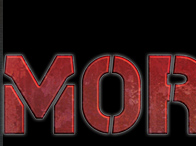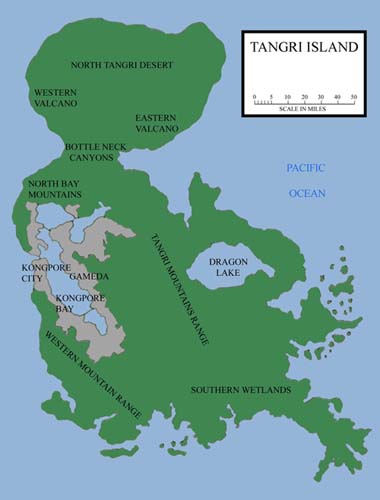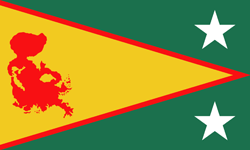



TANGRI ISLAND
Tangri Island is a Pacific island country, very similar to a Hawaii or a Taiwan, located some 200 miles southwest of Oahu. With an economic infrastructure that’s only second in Japan, Tangri’s become a major player in the global economic market with oil, textiles, goods and produce having become Tangri’s main exports. She relies on very little from the outside world to survive. With one of the busiest ports in the world, Tangri is a key shipping and receiving hub with strategic importance as well. And not unlike Taiwan, everyone wants a piece what she has to offer.
The nation of Tangri is an island a little bigger than the state of California. Polynesian settlers arrived on the continent from Southeast Asia about 40,000 years before the first Europeans began exploration in the 16th century. The Polynesian Maori reached Tangri in about A.D. 800. and settled the island. Their culture grew and transformed into what we know today as Tangri Island.
In 1603, the King of Tangri ushered in a long period of isolation from foreign influence in order to secure its internal power. For almost 275 years this policy enabled Tangri to enjoy stability and a flowering of its indigenous culture. Following the Treaty of Uhali with the US in 1902, Tangri opened its ports and began to intensively modernize and industrialize, wanting to make sure then never lost site of their heritage along the way. During the late 19th and early 20th centuries, Tangri almost came under the regional power of Japan, with most of the Tangri Army “drafted” into a conflict that was able to defeat the forces of both China and Russia. Though Japan occupied Korea, Formosa (Taiwan), and southern Sakhalin Island, Tangri wanted nothing more to do with their quest for power and withdrew their help. In 1931-32 Japan occupied Manchuria, and in 1937 it launched a full-scale invasion of China, again calling upon the Tangris for help, but this time, The King and his Royal Cabinet refused, stating the full power of the United States would be brought down upon the Empire’s head if they didn’t leave them in peace. Japan, knowing full well that they weren’t yet ready to tangle with the U.S., left Tangri alone. Japan attacked US forces in 1941 - triggering America's entry into World War II - and soon occupied much of East and Southeast Asia. Tangri, concerned they would be a major jumping off point for the Japanese, called upon American Forces in the Pacific to protect the country and set up a temporary duty/refueling station on the Island. After its defeat in World War II, the Americans did as they promised and left Tangri. Though Japan recovered to become an economic power and a staunch ally of the US, they are still, to this day, at odds with Tangri.
While The King retains his throne as a symbol of national unity, actual power rests in networks of powerful politicians, bureaucrats, and business executives. The economy experienced a major slowdown starting in the 1990s following three decades of unprecedented growth, but Tangri has begun to find itself as an economic power, both in Asia and globally. In 2005, Tangri began a two year term as a non-permanent member of the Joint Nations Defense Force and a member of the U.N. Security Council.

TANGRI’S PEOPLE
Definition of terms is as follows:
Median age:
This entry is the age that divides a population into two numerically equal groups; that is, half the people are younger than this age and half are older. It is a single index that summarizes the age distribution of a population. Currently, the median age ranges from a low of about 15 in Uganda and Gaza Strip to 40 or more in several European countries and Japan. See the entry for "Age structure" for the importance of a young versus an older age structure and, by implication, a low versus a higher median age.
Population Growth Rate:
The average annual percent change in the population, resulting from a surplus (or deficit) of births over deaths and the balance of migrants entering and leaving a country. The rate may be positive or negative. The growth rate is a factor in
determining how great a burden would be imposed on a country by the changing needs of its people for infrastructure (e.g., schools, hospitals, housing, roads), resources (e.g., food, water, electricity), and jobs. Rapid population growth can be seen as threatening by neighboring countries.

Tangri Population:
• 100,165,680 (July 2006 est.)
Age structure: 0-14 years:
• 14.2% (male 9,309,524/female 8,849,476)
• 15-64 years: 65.7% (male 42,158,122/female 41,611,754)
• 65 years and over: 20% (male 10,762,585/female 14,772,150) (2006 est.)
Median age:
• total: 41.8 years
• male: 48.7 years
• female: 43.7 years (2006 est.)
Population growth rate:
• 0.02% (2006 est.)
Birth rate:
• 7.36 births/1,000 population (2006 est.)
Death rate:
• 9.16 deaths/1,000 population (2006 est.)
Sex ratio:
• at birth: 1.05 male(s)/female
• under 15 years: 1.05 male(s)/female
• 15-64 years: 1.01 male(s)/female
• 65 years and over: 0.73 male(s)/female
HIV/AIDS - adult prevalence rate:
• less than 0.1% (2003 est.)
HIV/AIDS - people living with HIV/AIDS:
• 12,000 (2003 est.)
HIV/AIDS - deaths:
• 500 (2003 est.)
Nationality:
noun: Tangi (singular and plural)
adjective: Tangris
Ethnic groups:
• Tangri 95%,
• others 5% (Korean 418,345, Chinese 156,764, Brazilian 101,646, Filipino 95,812, American 63,874, British 57,278, other 139,216) note: up to 130,000 Americans of Tangri origin migrated to Tangri in the 1990s to work in industries; some have returned to America
Religions:
• Observe both Shinto and Buddhist 70%, other 30% (including Christian 20.7%)
Languages:
• English, Tangri (a mish-mash of Hawaiian and Japanese)
Follow MORAV on Facebook!
MORAV Custom Search



